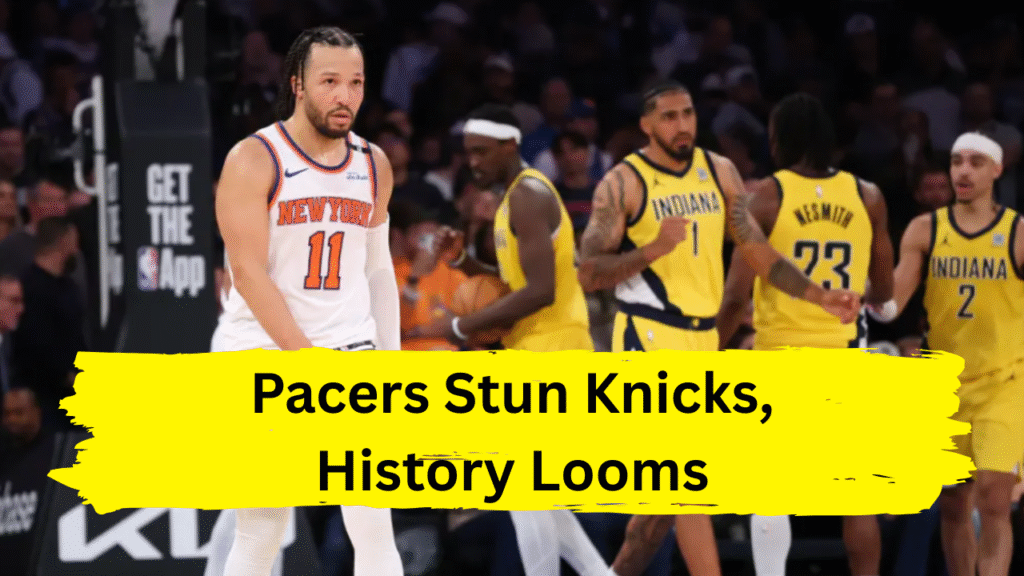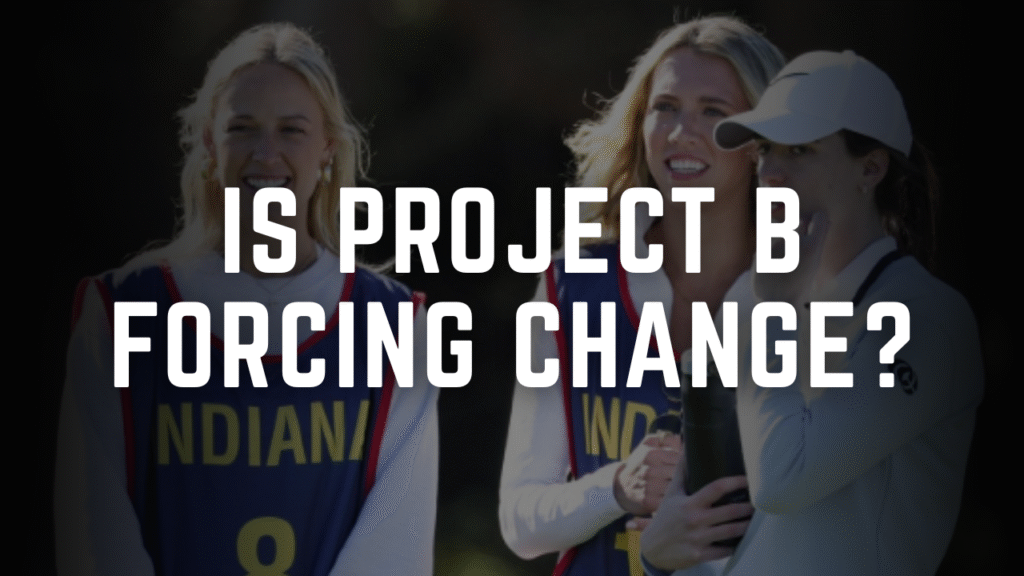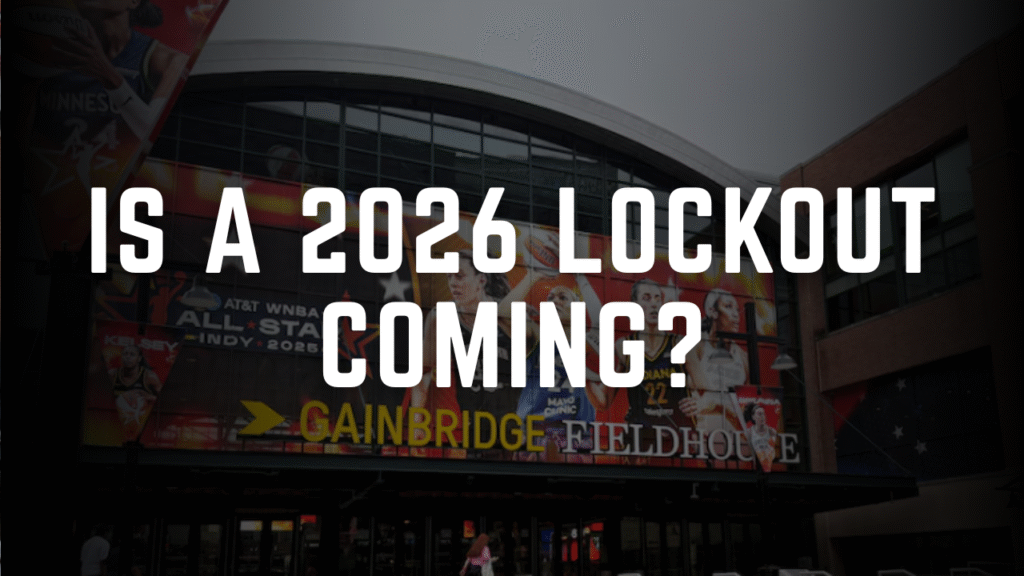The New York Knicks’ dream run to the NBA Finals is teetering on the edge of collapse after the Indiana Pacers delivered back-to-back gut punches at Madison Square Garden. Following a historic Game 1 meltdown, the Knicks faltered again in Game 2, falling 114-109 to the Pacers and slipping into a 0-2 series hole. The losses exposed critical flaws in New York’s execution and mentality, while Indiana showcased the poise of a team built for postseason survival. Here’s a deep dive into how the series unraveled—and what lies ahead for a Knicks squad now fighting for its playoff life.
Game 1: A Collapse for the Ages
The Knicks’ downfall began with one of the most staggering collapses in NBA playoff history. Leading by 14 points with 2:51 remaining in regulation, New York seemed poised to take control of the series. Jalen Brunson (43 points) and Karl-Anthony Towns (35 points) had dominated offensively, combining for the first 35-point duo in Knicks playoff history. But the Pacers, fueled by Aaron Nesmith’s six fourth-quarter threes and Tyrese Haliburton’s audacious buzzer-beating jumper, stormed back to force overtime and steal a 138-135 victory.
The collapse was unprecedented: no team since 1997 had lost a playoff game after leading by 14+ points in the final three minutes. Defensive miscommunication, missed free throws (including critical clanks by Towns and OG Anunoby), and a sudden loss of intensity allowed Indiana to score 31 points on their final 13 possessions. “We relaxed,” admitted Mikal Bridges, citing lapses in switching and rotations that left Nesmith wide open for game-shifting threes. The ghosts of Reggie Miller’s 1994 choke gesture loomed large as Haliburton mimicked the iconic taunt after his shot.
Game 2: Pacers’ Composure vs. Knicks’ Fragility
If Game 1 was a shock, Game 2 revealed a deeper pattern. The Pacers, now 7-0 in clutch playoff games this season, methodically dismantled New York’s defense behind Pascal Siakam’s playoff career-high 39 points. Despite a valiant 36-point, 11-assist effort from Brunson, the Knicks again crumbled late. A 9-0 run in the final minutes narrowed Indiana’s lead to one, but Brunson’s potential tying three rimmed out, and Myles Turner iced the game at the line.
The Knicks’ struggles extended beyond the final minutes. Karl-Anthony Towns, a minus-16 in 27 minutes, was benched for most of the fourth quarter amid defensive lapses. The starters repeatedly allowed Indiana to dictate pace, surrendering early leads in both halves. Even with Haliburton shooting just 5-of-16, the Pacers’ supporting cast—Nesmith, Ben Sheppard, and Obi Toppin—exploited New York’s lack of cohesion.
The Anatomy of a Breakdown
- Defensive Disarray: The Knicks’ switch-heavy scheme unraveled against Indiana’s motion offense. Miscommunication between Towns and Bridges on screens left Nesmith unchecked, while slow rotations gifted the Pacers open threes. In Game 1, Indiana scored 1.83 points per possession in the final six minutes—a rate that would shatter NBA records.
- Brunson’s Burden: While Brunson set a franchise record with his 19th 30-point playoff game, his late-game heroics weren’t enough. The Pacers increasingly trapped him, forcing others like Towns and Bridges to step up—a challenge they inconsistently met.
- Siakam’s Ascendancy: Acquired to bolster Indiana’s postseason grit, Siakam dominated with a blend of mid-range mastery and rim attacks. His 39-point performance in Game 2 underscored his ability to exploit mismatches, particularly against Towns’ tentative defense.
The Mental Toll
The Knicks now face a psychological mountain. Only six teams in NBA history have overcome an 0-2 deficit after losing both home games. Coach Tom Thibodeau has emphasized “resetting” and learning from film, but players like Josh Hart acknowledge the team played “not to lose” in crunch time—a stark contrast to their earlier comeback-driven identity. The absence of a reliable secondary scorer beyond Brunson (Anunoby and Bridges combined for 36 points in Game 2) exacerbates the pressure.
A Glimmer of Hope?
New York’s road resilience offers a sliver of optimism. The Knicks are 5-1 away from MSG this postseason, including gritty wins in Boston and Detroit. To replicate that success, they must:
- Reignite Towns: The All-Star big man’s playoff inconsistency (20 points in Game 2 but defensive liabilities) needs addressing. More pick-and-pop actions and aggressive rim runs could offset his struggles against Siakam.
- Tighten Rotations: Thibodeau’s reluctance to trust bench players like Miles McBride and Mitchell Robinson (who sparked a first-half turnaround in Game 2) has limited flexibility. Expanding the rotation could preserve starters’ energy for closing moments.
- Silence Haliburton: While Haliburton’s shooting has been subpar (14 points in Game 2), his playmaking (11 assists) remains lethal. Blitzing screens and forcing others to beat them might curb his influence.
Conclusion: A Defining Moment
The Knicks’ season hinges on their response in Indianapolis. For Indiana, the series is a validation of their “team-first” ethos—Siakam’s brilliance, Nesmith’s sharpshooting, and Carlisle’s tactical adjustments have them two wins from the Finals. For New York, it’s a test of resilience. As Brunson noted, the playoffs demand an “even-keel” mentality, but overcoming this deficit will require more: a return to the tenacity that defined their earlier upsets.
History is against them, but if there’s one lesson from these Knicks, it’s that they thrive as underdogs. The question now is whether they can channel that identity on the road—or if the Pacers’ cold efficiency will extinguish New York’s Cinderella run.
For further analysis and updates, follow ESPN’s playoff coverage and The Athletic’s live blogs.


